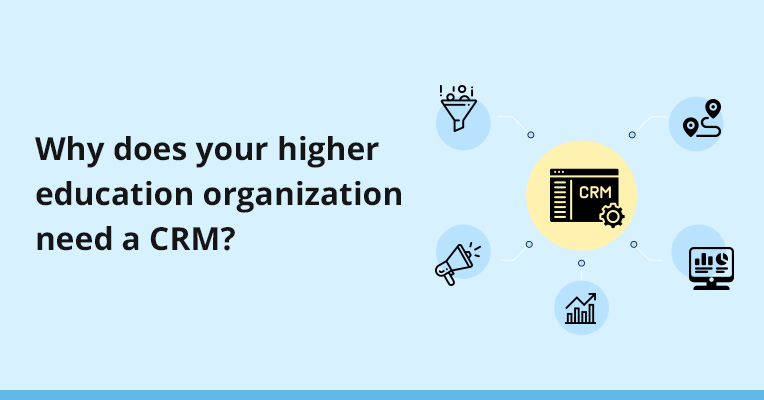If you’ve ever wondered about the role of CRM systems in higher education and why universities should invest in them, this article is for you.
Higher education institutions (HEIs) are undergoing significant transformations in their operations and interactions with their stakeholders—students, parents, alumni, employers, and staff. With increased demands for personalized and timely communication, proactive universities are turning to CRM systems to meet these expectations effectively.
CRM systems are software solutions designed to automate and manage interactions with prospective and current students, employees, alumni, and donors. By consolidating data such as names, contact details, educational backgrounds, and interaction history into a single database, CRMs enable HEIs to personalize communications and streamline processes. This article focuses on how CRM systems, particularly those built for higher education, can enhance engagement with prospective students.
What is a Higher Education CRM?
Higher Education CRM is a specialized tool that helps institutions manage their relationships with students throughout the entire lifecycle—from prospective to alumni. This system centralizes data, automates workflows, and provides insights into student interactions, enabling institutions to deliver a more personalized and efficient experience.
Here’s how a CRM system benefits higher education institutions:
- Faster Service: CRMs automate communication channels such as emails and follow-ups, reducing response times and ensuring prompt service.
- Data-Driven Insights: CRMs offer real-time data, trends, and analytics, helping institutions make informed decisions. For example, institutions can track the number of prospective students from specific regions or identify where potential students drop out in the recruitment process.
- Workflow Automation: CRMs automate repetitive tasks, ensuring that no inquiry or follow-up is overlooked. For instance, when a student requests information, the CRM can automatically assign tasks to the relevant department to send the requested materials.
- Tracking and Reporting: With CRM systems, institutions can track which marketing channels are most effective, allowing for smarter allocation of marketing budgets and resources.
What Makes Meritto the Best Purpose-Built CRM for Higher Education
When evaluating CRM solutions, Meritto stands out as the best CRM for higher education due to its tailored features and benefits:
- Comprehensive Lead Management: Meritto centralizes leads from various sources—online, offline, events, and more—into a unified platform. This ensures no lead is missed and allows for effective management and nurturing through various communication channels.
- Advanced Automation: Meritto’s CRM offers powerful automation features, including drip marketing workflows, automated student journeys, and personalized communication. This helps institutions engage with prospective students more effectively and efficiently.
- Enhanced Data Management: With Meritto, institutions benefit from robust reporting and analytics tools. The CRM provides centralized reports, tracks marketing performance, and offers customizable report-building options.
- Seamless Integration: Meritto integrates with multiple platforms and channels, including mobile applications, making it easier for counselors and staff to manage admissions on the go.
- Secure and Scalable: Hosted on secure AWS servers, Meritto ensures data privacy and security with features such as 256-bit encryption and user-specific permissions. Its scalable nature means it can grow with the institution’s needs.
Final words
In conclusion, a CRM for higher education is essential for institutions looking to streamline their operations, enhance student engagement, and make data-driven decisions. Meritto, with its specialized features and benefits, is the best CRM software for higher education, offering comprehensive solutions to meet the unique needs of universities. By investing in a CRM system, higher education institutions can improve their efficiency, foster better relationships with students, and ultimately achieve their enrollment goals more effectively.




